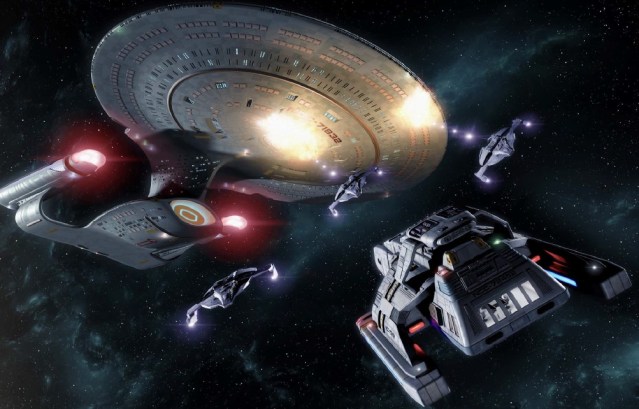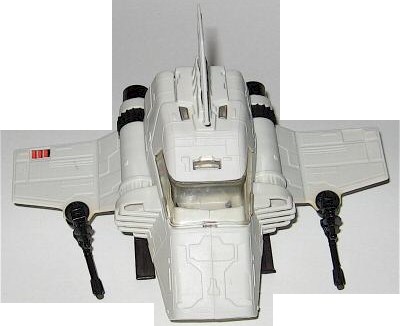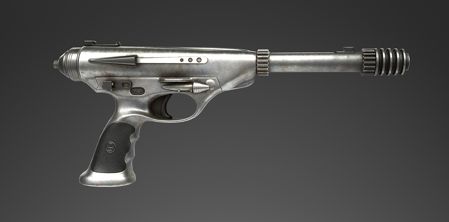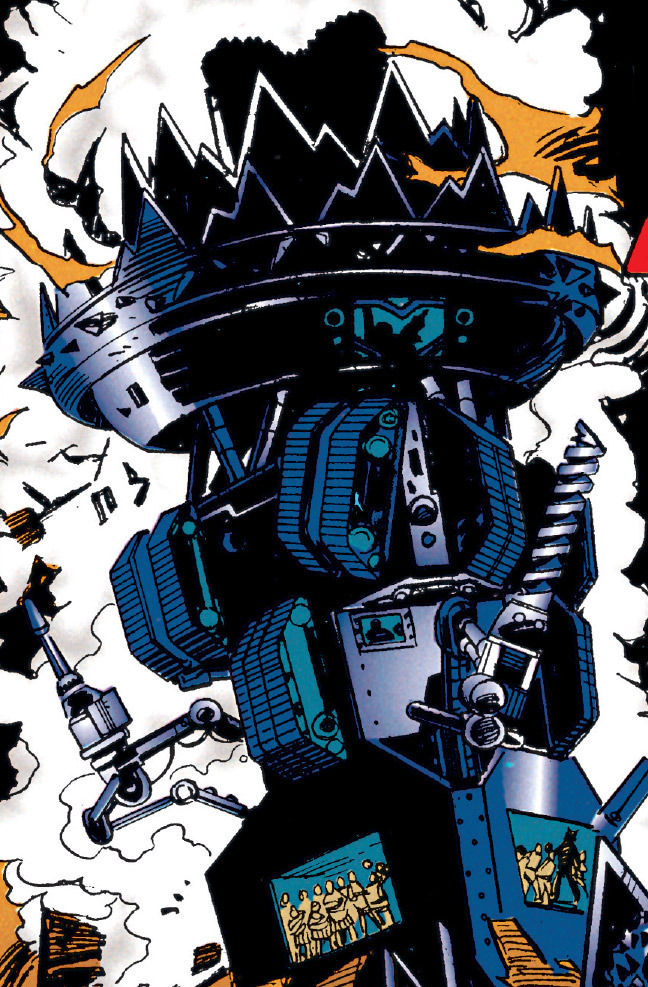 RULES OPTION: STARFIGHTERS VS CAPITAL STARSHIPS
- - - - - - - - - -
01-WHAT IT'S ABOUT
02-INSPIRATION
03-RULES OPTION: STARFIGHTERS VS CAPITAL SHIPS
--Capital Starships
--Starfighters
--Weapons
--Guns Modifier Chart
--Grid Mat Usage
- - - - - - - - - -
01-WHAT IT'S ABOUT
This is an optional rule for how to handle battles of starfighters against capital starships. The reason for this is that I've always had an issue with starfighters' ability to damage capital ships, or rather the lack there of. While many starfighters have proton torpedoes and/or concussion missiles to deal greater damage against such ships, when fighting the larger of these (such as Imperial Star Destroyers, more so with Super Star Destroyers, and so on), even these stronger weapons can fall short sometimes and lack the punch necessary to deliver a killing blow to a capital ship.
This is a contrast to how starfighters are shown capable of taking out such larger ships in various Star Wars media and many other settings and franchises, even if it has to be under specific conditions (taking out the bridge or some vylnerable area) or with the right kind of starfighter (devoted bombers such as Y-Wings carrying proton bombs, or B-Wings which were supposed to have been purpose-built to be capable of engaging capital ships, yet often cannot do this).
Where starfighters in Star Wars D6 can struggle against capital ships, this optional rule is intended to present an alternate take on such battles, making such engagements more possible for starfighters to pull off, and offering a potential advantage, as well as a potential disadvantage, depending on the desires of the GM/players and the circumstances.
In some settings starfighters seem to take a back seat compared to larger starships of the setting. Star Trek is one such setting this seems to have happened with, though some events attempt to change this such as the Dominion War and the final battle in Star Trek Discovery's season 2 finale. With these rules, starfighters should be a valuable asset in any battle against capital ships, and even help explain how these would work in many scifi space settings, including Star Trek.
- - - - - - - - - -
02-INSPIRATION
What inspired me to create this seems to be a misconception I had of the Death Star Technical Companion (DSTC) and the information there in. I had skimmed through this book over a decade ago, thought I had memorized the information inside, and skimming back through it again before writing up this rules option, I saw that I was wrong (or maybe just didn't find the part stating what I think I remembered).
I remembered the book stating the Death Star was divided into sections (thought it was eight, twelve, or sixteen, turns out it was 24!). However, I thought the book also stated the Death Star had to be destroyed section by section as well. With it already being Death Star scale, a difference of 12D between it and capital starships, this seemed to make the battlestation even more difficult to defeat in a capital ship fleet engagement, if not impossible. Skimming through the book again just now, I did not find this stated anywhere (however, if it is in there, someone feel free to leave a comment and let me know, I'd like to know if I'm wrong about that).
I remember thinking about dropping the Death Star scale to capital scale to give capital ships a chance of defeating it if a fleet could bring enough ships and firepower to bear against the Death Star. It's Hull dice could be used as "Hull Sections", and the capital ships would need to destroy these sections to destroy the Death Star. Whether to make the Hull Sections equal the Hull Dice or the 24 sections mentioned in the DSTC, or to combine these....I was never sure shich way to go with that. I'd say to use the Hull dice to decide how many sections as a default unless something more specific is mentioned, such as the Death Star's section divisions, which can be allowed if the GM decides this is a better fit. In the case of the Death Star, as massively huge as it is, having 24 Hull Sections isn't a bad idea.
So, with all that said, time to move on to what this Rules Option is all about...
- - - - - - - - - -
03-STARFIGHTERS VS CAPITAL SHIPS
Capital Starships
Taking what was said above into account, start by taking the capital ship's Hull dice (not Shield dice) and give it Hull Sections equal to these dice (pips are ignored in this). So 7D+2 Hull equals 7 Hull Sections, etc. When starfighters attack, the capital ship's scale is considered Starfighter scale when rolling to resist damage from the starfighters' weapons. This weakening of the capital ship's hull is made up for by it having Hull Sections, each of which must be destroyed one after another. Only after the last Hull Section is destroyed is the capital ship also considered destroyed by attacking starfighters.
The capital ship's weapons still retain their scale when rolling to attack and damage. Capital scale weapons will still have their modifiers, +6D to hit, and starfighters will have +6D to their Maneuverability to dodge such attacks. If they have Starfighter scale weapons, these will be best to use against attacking starfighter ships.
Every "Destroyed" result on the Damage Chart results in a Hull Section being destroyed. If a damage result rolls higher than what is needed to destroy the Hull Section, every +5 above the needed result destroys another Hull Section of the capital ship.
If other capital ships join the battle and fight each other, there are no changes to combat between these ships.
Starfighters
On the other side of this are starfighters and other Starfighter scale ships (like light freighters modified for combat such as the Millenium Falcon). Starfighters will operate as usual with no change to their scale. What does change is the use of starfighter squadrons. Where capital ships now have Hull Sections at starfighter scale for the purposes of defending against incoming Starfighter scale damage, starfighters can have several ships join up to form squadron. These squadrons now also have "Hull Sections" like capital ships do, equal to how many starfighters have joined the squadron (5 X-Wings equals 5 Hull Sections for the squadron).
When capital ships attack starfighter squadrons, Destroyed results on the Damage Chart results in the loss of a Hull Section and means a strfighter from the squadron is destroyed. Just as with capital ships, higher damage results past destroyed result in +1 Hull Section (starfighter) destroyed for every +5 damage roll past that needed for a Destroyed result. Each Hull Section lost means a ship in the squadron has been destroyed and lost.
The number of starfighters that are part of a squadron is ultimately up to the player of the capital ship (or base or other source the starfighters come from) and how ever many starfighters they have to place in squadrons. They could have 12 starfighters and place them in 2 groups of 6, 3 groups of 4, 4 groups of 3, or a single group of 12, or any other number they choose. Each starfighter in a squadron adds +1 Hull Section, so larger squadrons have a higher chance of survivability but leaves the controlling player with less versatility and options.
Starfighters in squadrons should be the same class/type/etc of ship. Make up whatever reason you wish such as naval logistics or something, but doing this will simply make things easier in the long run. However, if GMs/players want to do something different and mix their starfighters, please feel free to do so. The reason for keeping squadrons composed of the same class of ship is so that you will have the same stats for each fighter (these are not increased from having extra ships, that is what the Hull Sections are for).
Squadrons can also be made up of other ships than starfighters. Light freighters used as bombers or gunships could be used as a kind of heavy squadron. The rule for using squadrons could even be applied to capital ships if using a fleet to attack the Death Star or other capital ship groups. The only drawback in using capital ships as squadrons would be figuring out where to place them on a grid mat if using one to keep track of locations and placement during space (or ground) battles. Starfighters and light freighters in squadrons could be represented by a single miniature, token, etc, on a grid mat as they are often in formation and stay close together (if they do not stay together in formation, they cannot use rules for squadrons and Hull Sections), and only take up 1 grid mat unit (assuming this unit equals space speed 1 for ship speed movement). Capital ships, on the other hand, are much larger and take up more space on a grid mat. While they could possibly use squadron rules, figuring out how to place them on a grid mat might be difficult. The best suggestion I can think of at this time is to raise the scale of the grid mat's units. Instead of a single unit being equal to 1 space speed unit, maybe instead make it equal 2, 5, or even 10. The good side of this is being able to fit a capital ship squadron on the grid mat, and even being able to fit the Death Star on there as well. The bad side is that the Death Star and capital ships' space speeds may be harder to keep track of.
If using weapons with a blast radius against squadrons, a Damage Chart Destroyed result could destroy the entire squadron without needing to apply the 1 Hull Section per +5 Damage rule. GM discretion as to what weapons apply (Proton torpedoes and/or concussion missiles may use this rule, or something bigger may be needed).
Weapons
The Star Wars Rules Companion has a handy little chart in it, the Guns Modifier Chart on page 36. This allows GMs/players using capital ships to take their multitudes of weapons and combine them together into a single attack action and adds a bonus to the To Hit and Damage rolls. This is very handy for capital ships fighting against each other or when using the Death Star and the vast amount of weapons across its sections as mentioned in the DSTC.
If using the Rules Option for starfighters and squadrons as mentioned above, the Guns Modifier Chart can be applied to squadrons as well. As squadrons stay in formation, they usually aim their weapons at the same intended target to increase the possibility of taking it out. If using the chart for squadrons, the bonuses are applied based on how many starfighters are in the squadron, not how many weapons they have.
Guns Modifier Chart referenced here for convenience.
Guns Modifier Chart
Guns To Hit/Damage Modifier
1 0
2 +2
3 +1D
4 +1D+1
6 +1D+2
8 +2D
12 +2D+1
16 +2D+2
24 +3D
32 +3D+1
48 +3D+2
60 +4D
90 +4D+1
120 +4D+2
180 +5D
250 +5D+1
Grid Mat Usage
If using some kind of a grid mat for keeping track of space combat, it's pretty straight-forward. 1 grid mat unit = 1 space speed unit. 1 capital ship needs 1 grid mat unit. 1 squadron needs 1 grid mat unit. If squadrons break formation, each ship from the squadron now needs its own grid mat unit to represent it (GM discretion if starfighters/freighters/gunships/etc can occupy the same grid mat unit).
If a GM/player is using a capital ship that can launch starfighters or other ships formed up in squadrons, use a miniature or token to represent the capital ship, and a single miniature or token can represent each squadron being launched to take part in combat. Once the rules above are understood, doing this makes capital ships and squadrons much easier to keep track of in what could be a large scale battle. Especially if several players are using a capital ship and each can launch squadrons.
|












